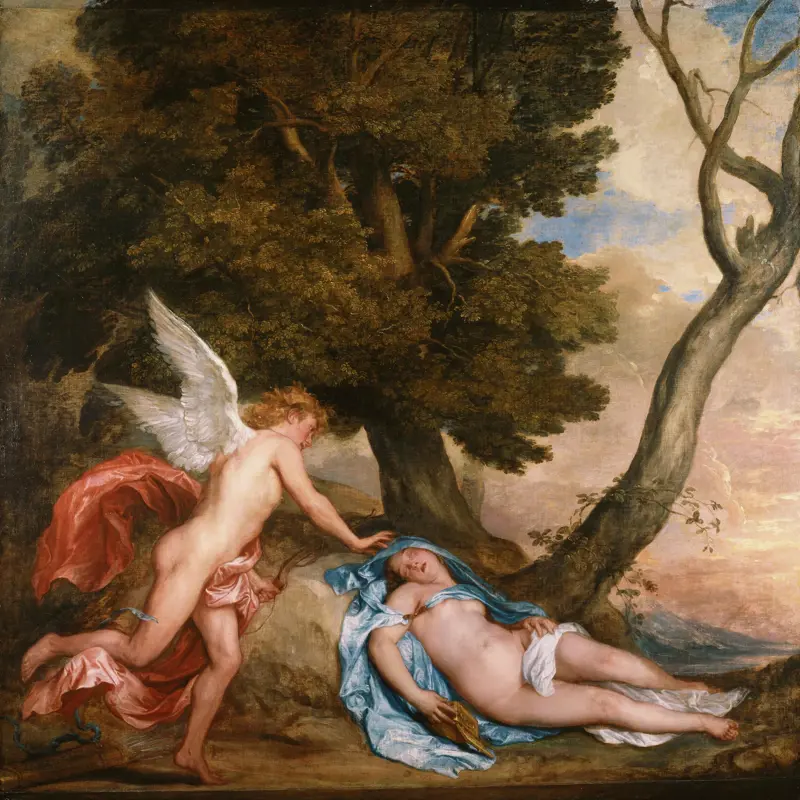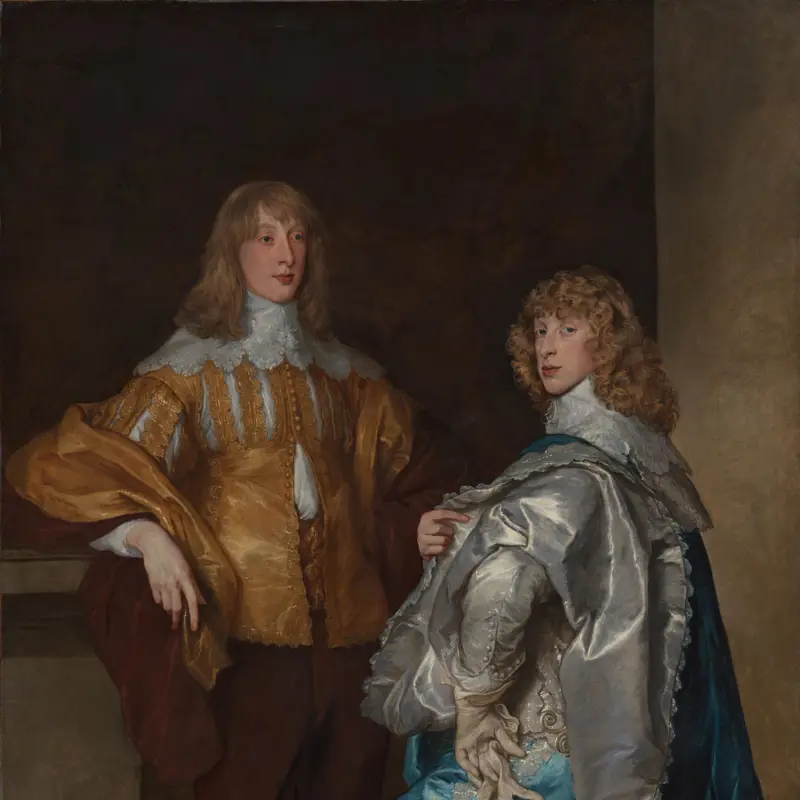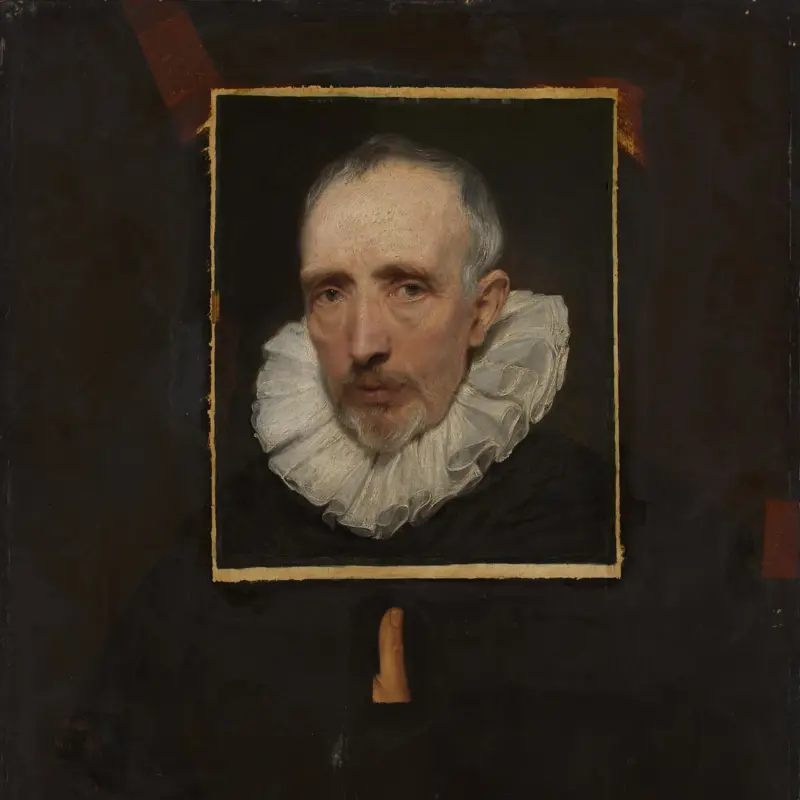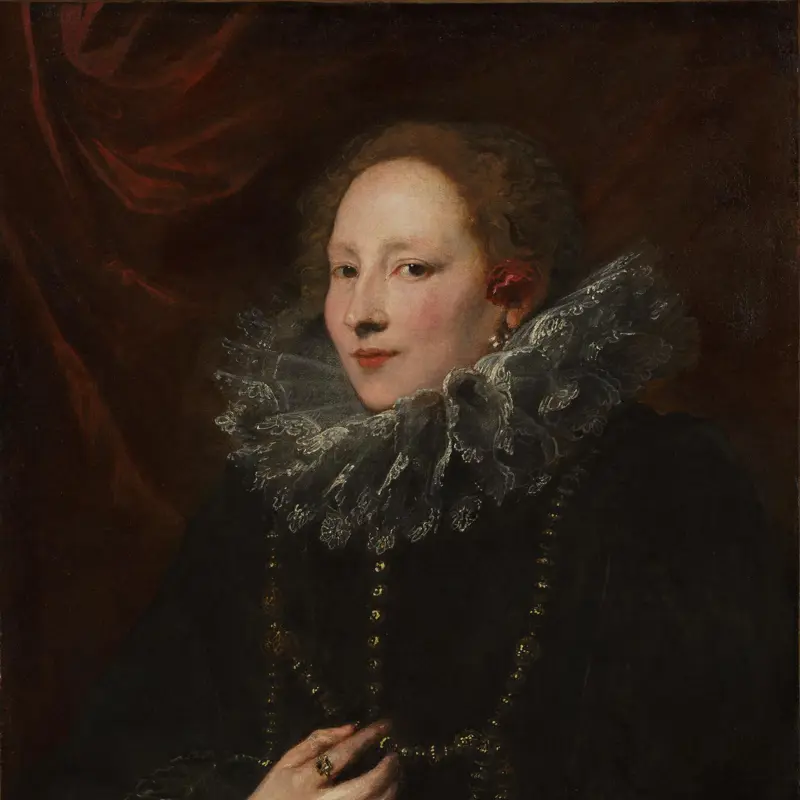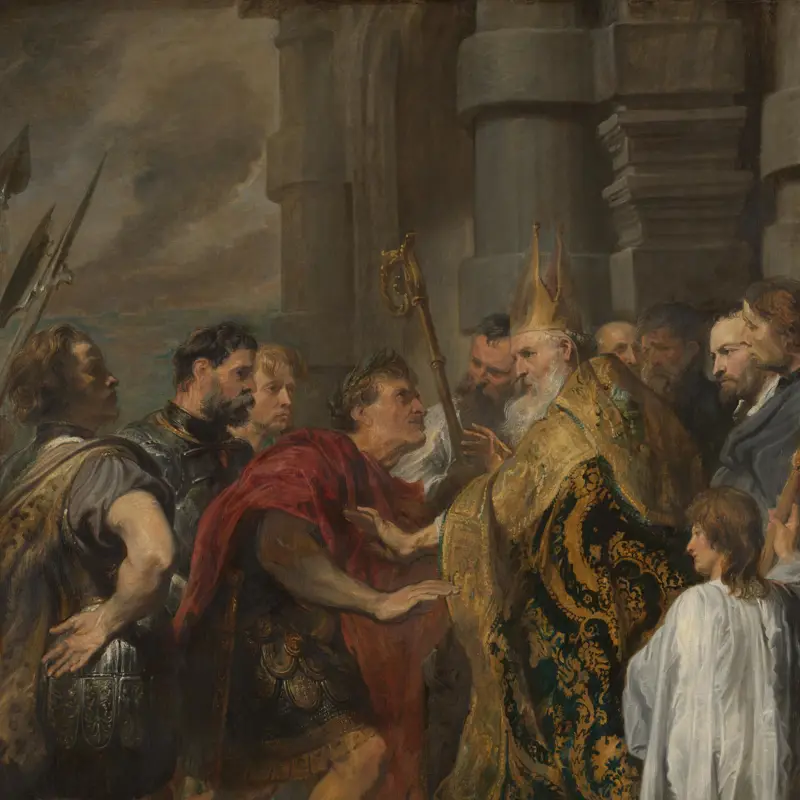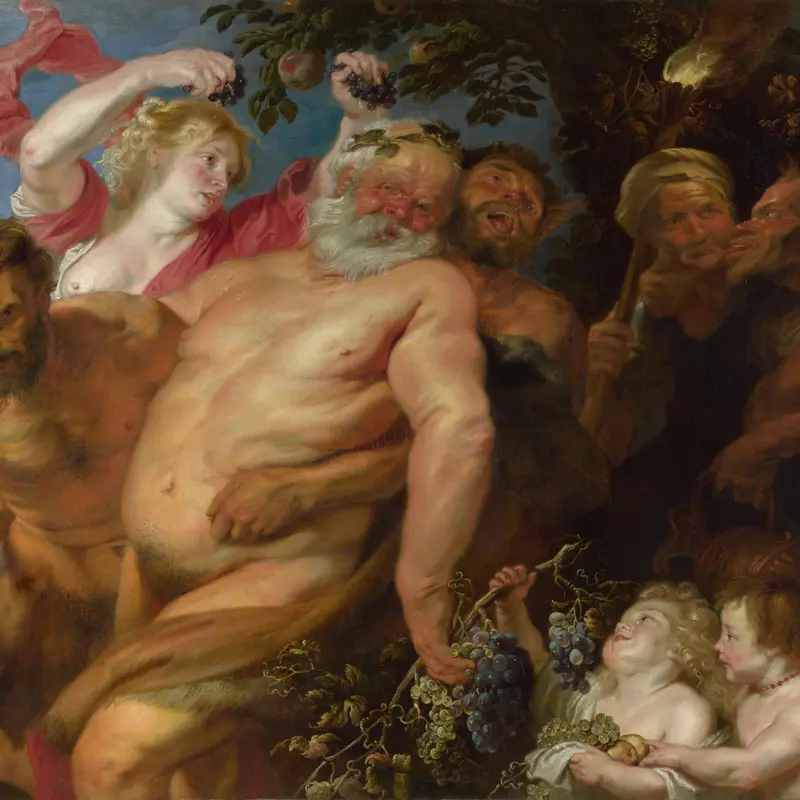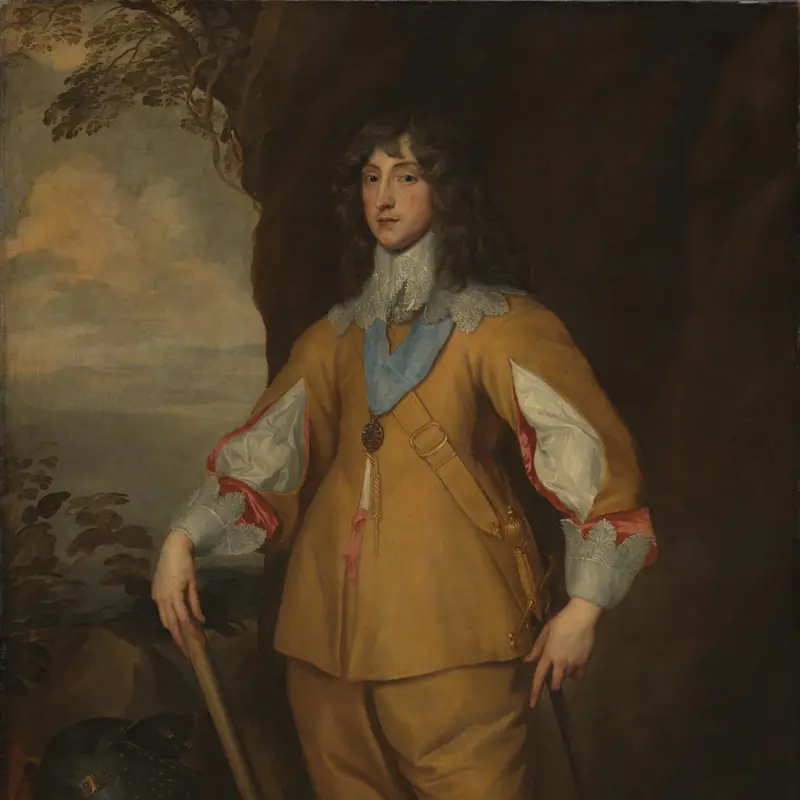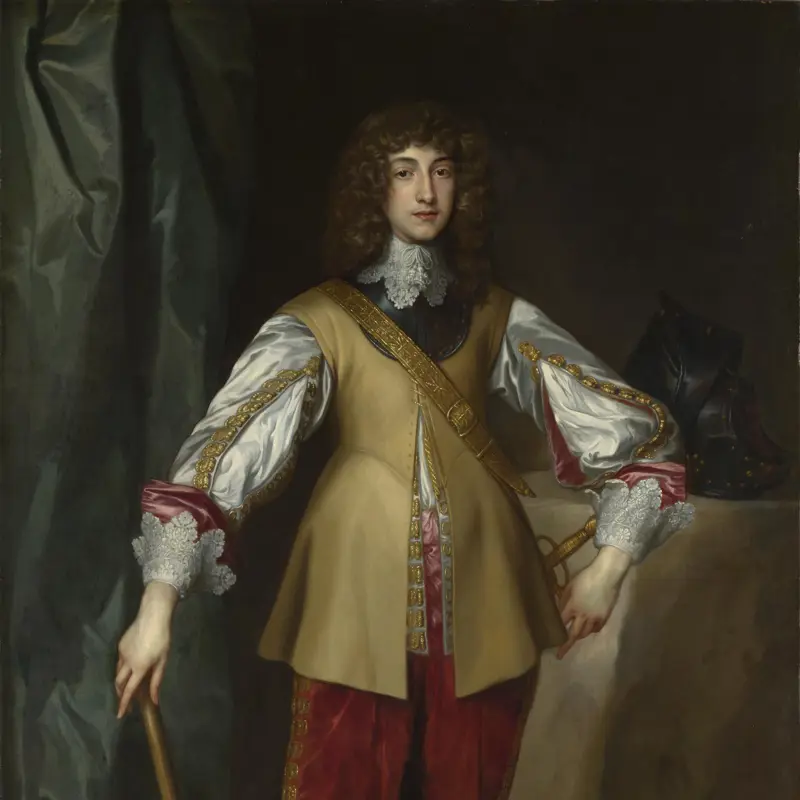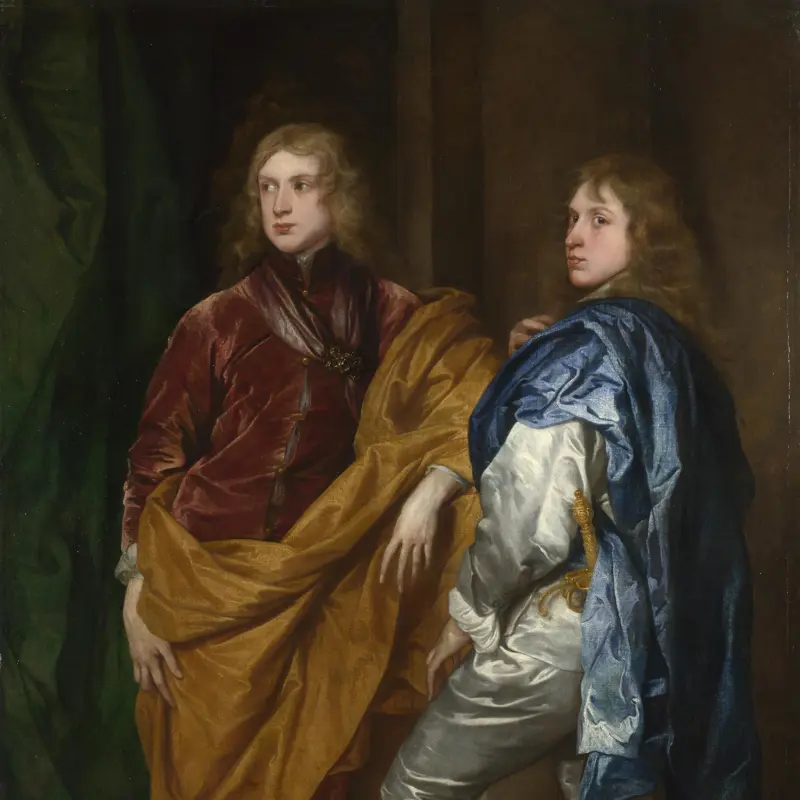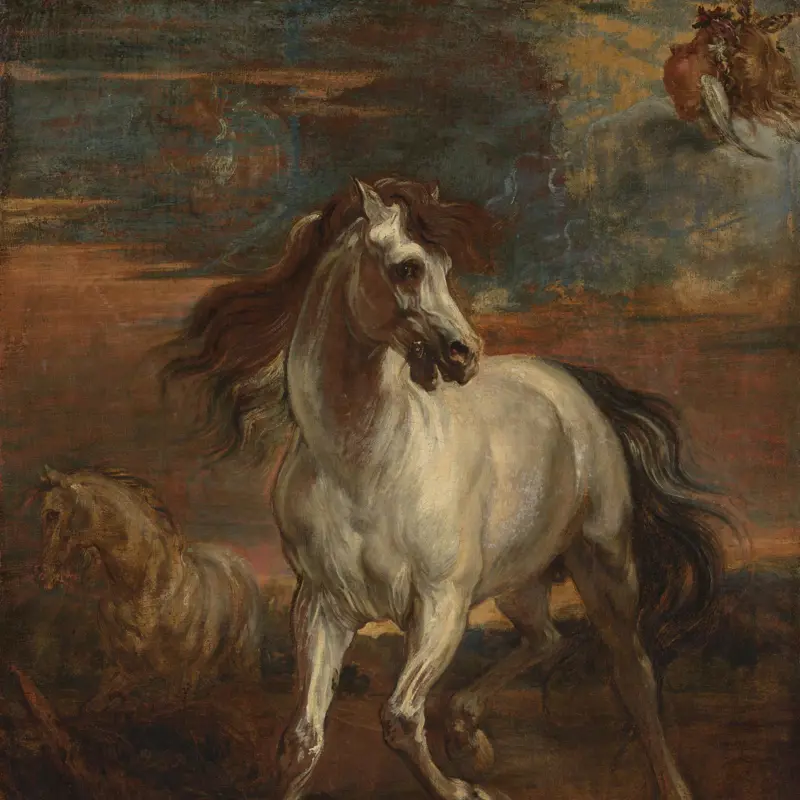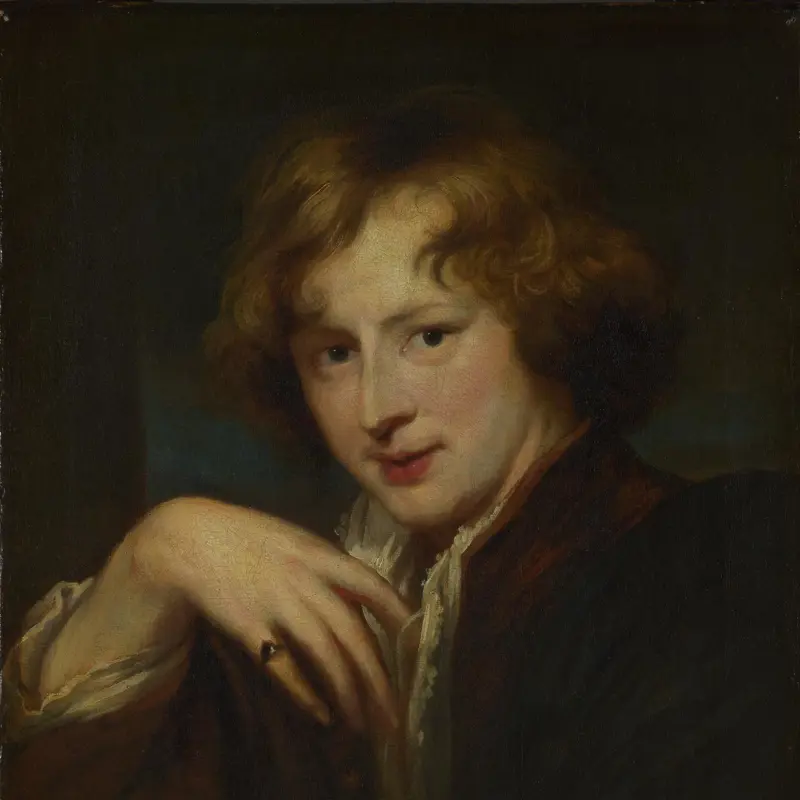Anthony van Dyck, 'William Feilding, 1st Earl of Denbigh', about 1633-4
About the work
Overview
William Feilding, 1st Earl of Denbigh steps forward, gun in hand. He is shown life-size. We look up at him from below, which emphasises his commanding pose, but the elegance and urbanity usually present in Anthony van Dyck’s formal portraits seems to be missing. This is partly because of the Earl’s relaxed clothing – a mix of contemporary Indian and European fashion – and because the pose is a little contrived and awkward. The Indian servant boy points up at the parrot that the Earl can already see.
Van Dyck must have collaborated closely with his sitters, discussing dress and pose. He painted them as they wished to be seen but also presented their characters as they revealed themselves to him. The Earl had returned from a voyage to India and it is this trip that he must have wished to commemorate.
Key facts
Details
- Full title
- William Feilding, 1st Earl of Denbigh
- Artist
- Anthony van Dyck
- Artist dates
- 1599 - 1641
- Date made
- About 1633-4
- Medium and support
- Oil on canvas
- Dimensions
- 247.5 × 148.5 cm
- Acquisition credit
- Presented by Count Antoine Seilern, 1945
- Inventory number
- NG5633
- Location
- Room 34
- Collection
- Main Collection
- Frame
- 17th-century Flemish Frame
Provenance
Additional information
This painting is included in a list of works with incomplete provenance from 1933–1945; for more information see Whereabouts of paintings 1933–1945.
Text extracted from the ‘Provenance’ section of the catalogue entry in Gregory Martin, ‘National Gallery Catalogues: The Flemish School: circa 1600–circa 1900’, London 1986; for further information, see the full catalogue entry.
Exhibition history
-
2009Van Dyck & BritainTate Britain18 February 2009 - 17 May 2009
-
2015Artist and EmpireTate Britain25 November 2015 - 10 April 2016
Bibliography
-
1774T. Pennant, A Tour of Scotland and Voyage to the Hebrides, 1772, Chester 1774
-
1820S.H. Spiker, Travels Through England, Wales and Scotland in the Year 1816, London 1820
-
1829
J. Smith, A Catalogue Raisonné of the Works of the Most Eminent Dutch, Flemish, and French Painters: In Which is Included a Short Biographical Notice of the Artists, with a Copious Description of Their Principal Pictures […], 9 vols, London 1829-1842
-
1854G.F. Waagen, Treasures of Art in Great Britain: Being and Account of the Chief Collections of Paintings, Drawings, Sculptures, Illuminated Mss. […], vol. 2, trans. E. Eastlake, London 1854
-
1863J. Bruce (ed.), Calendar of State Papers DomesticL Charles I, 1633-4, London 1863
-
1882J. Guiffrey, Antoine van Dyck: Sa vie et son oeuvre, Paris 1882
-
1883J.M. Gray, Notes of the Edinburgh Loan Exhibition of 1883, Edinburgh 1883
-
1887C. Phillips, 'The Grosvenor Gallery Vandyck', Daily Telegraph, III, 1887
-
1888C.H. Yule (ed.), The Diary of William Hedges, Esq, London 1888
-
1892W.N. Sainsbury (ed.), Calendar of State Papers, Colonial Series, East Indies and Persia, 1630-1634, London 1892
-
1900L.H. Cust, Anthony van Dyck: An Historical Study of his Life and Works, London 1900
-
1915C.M. Feilding, Royalist Father and Roundhead Son, London 1915
-
1953V. Slomann, Bizarre Designs in Silk: Trade and Traditions, Copenhagen 1953
-
1955The National Gallery, The National Gallery: 1938-1954, London 1955
-
1959E.P. Quigly, 'A Passage to India, A.D. 1631', The Guardian, 1959
-
1967K. Garas, 'Die Entstehung der Galerie des Erzherzogs Leopold Wilhelm', Jahrbuch der Kunsthistorischen Sammlungen in Wien, LXIII, 1967
-
1970G. Martin, The Flemish School, circa 1600-circa 1900, London 1970
-
1978A. Macintyre and K. Garlick (eds), The Diary of Joseph Farington, vol. 5, New Haven 1978-1984
-
1983J.D. Stewart, '"Hidden Persuaders": Religious Symbolism in van Dyck's Portraiture, with a Note on Dürer's "Knight and the Devil"', RACAR: revue d'art canadienne / Canadian Art Review, X/1, 1983, pp. 57-68
-
1983A.A. Tait, 'The Duke of Hamilton's Palace', The Burlington Magazine, CXXV/964, 1983, pp. 394-402
-
1985T.K. Rabb, 'Artists and Warfare: A Study of Changing Values in Seventeenth-Century Europe', Transactions of the American Philosophical Society, LXXV/6, 1985, pp. 79-106
-
1986Martin, Gregory, National Gallery Catalogues: The Flemish School, circa 1600 - circa 1900, London 1986
-
1986P. Shakeshaft, 'Documents for the History of Collecting, I: "To Much Bewiched with Thoes Intysing Things": The Letters of James, Third Marquis of Hamilton and Basil, Viscount Feilding, concerning Collecting in Venice 1635-1639', The Burlington Magazine, CXXVIII/995, 1986, pp. 114-32
-
1986M. Hall, 'Three Indian Costume Pieces of the Early Mughal Period', in R. Skelton et al. (eds), Facets of Indian Art: Symposium, Victoria and Albert Museum, 1982, London 1986, pp. 232-42
-
1987C. Brown, The National Gallery Schools of Painting: Flemish Paintings, London 1987
-
1988E. Larsen, The Paintings of Anthony van Dyck, Freren 1988
-
1990R. Wendorf, The Elements of Life: Biography and Portrait-Painting in Stuart and Georgian England, Oxford 1990
-
1995R.B. Prud'homme van Reine, 'Paerlen op de kroon der Gallerij. De schilderijen van de zeventiende-eeuwse zeeofficierenfamilie Van Nes in het Rijksmuseum', Bulletin van het Rijksmuseum, XLIII/2, 1995, pp. 96-112
-
1998K. van der Van der Stighelen, Van Dyck, Tielt 1998
-
1999M. Rogers, 'Van Dyck in England', in C. Brown and H. Vlieghe, Van Dyck 1599-1641, Antwerp 1999, pp. 79-91
-
1999G. Raatschen, Van Dyck in der Alten Pinakothek, Munich 1999
-
1999R. White, 'Van Dyck's Paint Medium', National Gallery Technical Bulletin, XX, 1999, pp. 84-8
-
2000E.B. Gilman, 'Madagascar on My Mind: The Earl of Arundel and the Arts of Colonization', in P. Erickson and C. Hulse (eds), Early Modern Visual Culture: Representation, Race, and Empire in Renaissance England, Philadelphia 2000
-
2001
C. Baker and T. Henry, The National Gallery: Complete Illustrated Catalogue, London 2001
-
2004H. Vey et al., Van Dyck: A Complete Catalogue of the Paintings, New Haven 2004
-
2008C. Riding, 'Travellers and Sitters: The Orientalist Portrait', in N. Tromans (ed.), The Lure of the East: British Orientalist Painting, London 2008, pp. 48-61
-
2008A. Merle du Bourg, Antoon van Dyck: Portraits (exh. cat., Musée Jacquemart-André, Paris), Brussels 2008
-
2009K. Hearn (ed.), Van Dyck & Britain (exh. cat., Tate Britain, London), London 2009
-
2012T. Mayer, 'Cultural Cross-Dressing: Posing and Performance in Orientalist Portraits', Journal of the Royal Asiatic Society, ser. 3, XXII/2, April 2012, pp. 281-98
-
2012C. Smylitopoulos, 'Portrait of a Nabob: Graphic Satire, Portraiture, and the Anglo-Indian in the Late Eighteenth Century', RACAR: Revue d'art canadienne / Canadian Art Review, XXXVII/1, 2012, pp. 10-25
-
2015C. Jacobi, A. Smith and D.B. Brown (eds), Artists and Empire: Facing Britain's Imperial Past, London 2015
-
2018J. Wood, 'Buying and Selling Art in Venice, London and Antwerp: The Collection of Bartolomeo della Nave and the Dealings James, Third Marquis of Hamilton, Anthony van Dyck, and Jan and Joacob van Veerle, c. 1637-50', The Walpole Society, LXXX, 2018, pp. 1-200
-
2021C. White, Anthony van Dyck & the Art of Portraiture, London 2021
About this record
If you know more about this work or have spotted an error, please contact us. Please note that exhibition histories are listed from 2009 onwards. Bibliographies may not be complete; more comprehensive information is available in the National Gallery Library.


